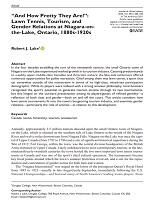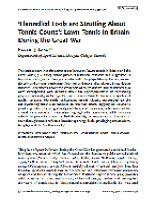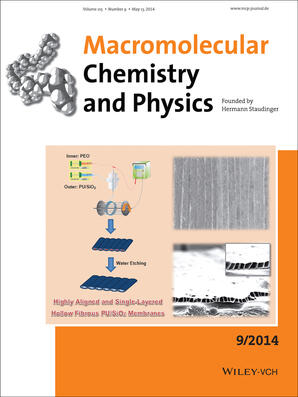Science and Technology
Related Works
Content type
Digital Document
Abstract
The neuroprotective effects of inducing the blood-brain barrier ATP-binding cassette protein transporter P-glycoprotein (P-gp) with clotrimazole (CTZ) in both fed and fasted zebrafish (Danio rerio) against the CNS-toxicant ivermectin (IVM, 22,23-dihydro avermectin B1a + 22,23-dihydro avermectin B1b) were examined. Zebrafish were administered 2 μmol/kg IVM intraperitoneally, and various behavioural assays (swimming performance, exploratory behaviour, olfactory responses, motor coordination, and escape responses) were used to measure neurological dysfunction. IVM administration alone caused a decrease in mean swim speed (91 % of controls), maximal speed (71 %), passage rate (81 %), 90° turns (81 %), and response to food stimulus (39 %). IVM exposure also increased the percent time that fish spent immobile (45 % increase over controls) and the percent of lethargic fish (40 % increase). Fish administered 30 μmol/kg of the P-gp inducer CTZ intraperitoneally 3 d prior to IVM exposure exhibited a change in only the % time spent immobile. These data indicate that P-gp induction may be limited in protecting the zebrafish CNS from IVM over baseline. Fasted fish did not differ from fed fish in the effects of IVM on behaviour, and no differences were seen following P-gp induction with CTZ. These results suggest that this chemical defence system is not downregulated when fish are challenged with limited energy availability.
Origin Information
Content type
Digital Document
Abstract
1. Using the two electrode voltage clamp configuration, a high voltage activated whole-cell Ca2+ channel current (IBa) was recorded from a cluster of neurosecretory ‘Light Yellow’ Cells (LYC) in the right parietal ganglion of the pond snail Lymnaea stagnalis.
2. Recordings of IBa from LYCs show a reversible concentration-dependent depression of current amplitude in the presence of the volatile anaesthetics halothane, isoflurane and sevoflurane, or the non-volatile anaesthetic pentobarbitone at clinical concentrations.
3. In the presence of the anaesthetics investigated, IBa measured at the end of the depolarizing test pulse showed proportionally greater depression than that at measured peak amplitude, as well as significant decrease in the rate of activation or increase in inactivation or both.
4. Within the range of concentrations used, the concentration-response plots for all the anaesthetics investigated correlate strongly to straight line functions, with linear regression R2 values > 0.99 in all instances.
5. For volatile anaesthetics, the dose-response regression slopes for IBa increase in magnitude, in order of gradient: sevoflurane, isoflurane and halothane, a sequence which reflects their order of clinical potency in terms of MAC value."
Origin Information
Content type
Digital Document
Abstract
In the four decades straddling the turn of the nineteenth century, the small Ontario town of Niagara-on-the-Lake experienced marked growth in its tourism industry. Catering predominantly to wealthy upper-middle-class Canadian and American visitors, the lake-side settlement offered numerous opportunities for polite recreation. Chief among them was lawn tennis, a sport that sat somewhat outside of the mainstream in terms of its high-class, mixed-sex participation demographic. While its players were imbued with a strong amateur philosophy, local boosters recognized the sport’s potential to generate tourism income through its two tournaments, but this hinged on the outward presentation among its players/guests of refined gentility—a reflection of both class and gender—both on and off the court. This article considers how lawn tennis tournaments fit into the town’s burgeoning tourism industry, and examines gender relations—particularly the role of women—in relation to this development.
Origin Information
Content type
Digital Document
Abstract
This article examines the connections between (lawn) tennis in Britain and the Great War (1914–1918). While previous historical research has suggested a four-year hiatus, in fact the sport continued to be played during the war, recreationally and among servicemen/women and more elite players in exhibition matches. Anecdotes about the cessation of tournaments and restricted play were interspersed with debates about the appropriateness of continuing play recreationally, as the ‘gentleman in tennis flannels’ became a symbol of public censure. Alongside enlistment, tennis players responded to the call byoffering their club facilities to the war effort, digging up courts to plant vegetables, hosting charity matches, and providing entertainment for convalescent soldiers. This analysis highlights the significance of tennis as a vehicle to promote a kind of British identity, as responses to the war as seen through tennis reflected broader sporting ideals, privileging amateurism, fair play and the ‘stuff upper lip’.
Origin Information
Content type
Digital Document
Abstract
In view of scholarly work that has explored the socio-psycho significance of national performativity, the body and the “other,” this article critically analyses newspaper representations of the Canadian-born British tennis player Greg Rusedski. Drawing on Lacanian interpretations of the body, it illustrates how Rusedski’s media framing centered on a particular feature of his body – his “smile.” In doing so, we detail how Rusedski’s “post-imperial” Otherness – conceived as a form of “extimacy” (extimité) – complicated any clear delineation between “us” and “them,” positing instead a dialectical understanding of the splits, voids and contradictions that underscore the national “us.”
Origin Information
Content type
Digital Document
Abstract
Sport continues to be one of the primary means through which notions of Englishness and Britishness are constructed, contested, and resisted. The legacy of the role of sport in the colonial project of the British Empire, combined with more recent connections between sport and far right fascist/nationalist politics, has made the association between Britishness, Englishness, and ethnic identity(ies) particularly intriguing. In this paper, these intersections are explored through British media coverage of the Canadian-born, British tennis player, Greg Rusedski. This coverage is examined through the lens of ‘performativity,’ as articulated by Judith Butler. Through a critical application of Butler's ideas, the ways in which the media seek to recognise and normalise certain identities, while problematising and excluding others, can be more fully appreciated. Thus, it was within newspaper framings of Rusedski that hegemonic notions of White Englishness could be performed, maintained, and embedded.
Origin Information
Content type
Digital Document
Abstract
<p>Presentation at the <a href="http://www.nasss.org/conference/2015-conference/">North American Society for the Sociology of Sport (NASSS) 36th Annual Conference: Sports at/on the Borderlands: Translations, Transitions, and Transgressions, November 4-7, 2015, Santa Fe, New Mexico.</p>
<p>Aim of the presentation was to analyze the often contradictory social constructions of English and British national identities in tennis, particularly focused on Wimbledon and the All England Lawn Tennis Club.</p>
Origin Information
Content type
Digital Document
Abstract
In recent years, acoustical analysis of the swallowing mechanism has received considerable attention due to its diagnostic potentials. This paper presents a hidden Markov model (HMM) based method for the swallowing sound segmentation and classification. Swallowing sound signals of 15 healthy and 11 dysphagic subjects were studied. The signals were divided into sequences of 25 ms segments each of which were represented by seven features. The sequences of features were modeled by HMMs. Trained HMMs were used for segmentation of the swallowing sounds into three distinct phases, i.e., initial quiet period, initial discrete sounds (IDS) and bolus transit sounds (BTS). Among the seven features, accuracy of segmentation by the HMM based on multi-scale product of wavelet coefficients was higher than that of the other HMMs and the linear prediction coefficient (LPC)-based HMM showed the weakest performance. In addition, HMMs were used for classification of the swallowing sounds of healthy subjects and dysphagic patients. Classification accuracy of different HMM configurations was investigated. When we increased the number of states of the HMMs from 4 to 8, the classification error gradually decreased. In most cases, classification error for N = 9 was higher than that of N = 8. Among the seven features used, root mean square (RMS) and waveform fractal dimension (WFD) showed the best performance in the HMM-based classification of swallowing sounds. When the sequences of the features of IDS segment were modeled separately, the accuracy reached up to 85.5%. As a second stage classification, a screening algorithm was used which correctly classified all the subjects but one healthy subject when RMS was used as characteristic feature of the swallowing sounds and the number of states was set to N = 8.
Origin Information
Content type
Digital Document
Abstract
Heavy‐atom substitution chemistry in donor–acceptor (D–A) conjugated polymers has gained increasing attention in the past few years. Overall, the introduction of “heavy” atoms (below C in group 14; below N in group 15; below S in group 16) into D–A conjugated polymers allows control over properties through relatively straightforward synthetic chemistry, and produces materials with high molecular weights (>20 000 g mol−1), strong absorption (ε ≈ 40 000 L mol−1 cm−1), narrow highest occupied molecular orbital (HOMO)–lowest unoccupied molecular orbital (LUMO) gaps (<1 eV), as well as high charge‐carrier mobility (>10−2 cm2 V−1 s−1). This Trend article aims to describe heavy‐atom substitution effects in D–A polymers, and their applications, by systematically examining representative polymer structures.
Origin Information
Content type
Digital Document
Abstract
Controlling the phase-separation behavior and achieving an ideal morphology has turned into one of the most important challenges in the field of polymer electronics. In this study we report a straightforward route to ‘blocky’ copolymers that incorporates selenophene into a benzodithiophene (BDT)–thienothiophene (TT) donor–acceptor system for improved molecular ordering. The blocky structure preserves the optical properties of the parent polymers, which is different than an analogue employing purely statistical sequence. Peak force quantitative nanomechanical mode atomic force microscopy reveals a more ordered network-like morphology in blocky polymer:PC71BM films. However the photovoltaic properties of blocky polymers are still lower than the physical mixtures of the two parent polymers. This blocky copolymer approach can be applied to many other polymerization methods to prepare many new types of blocky D–A polymers. As such, it could be a new tool for tuning the polymer crystallinity, and eventually achieving controllable solid-state morphology for polymer electronic applications.
Origin Information










